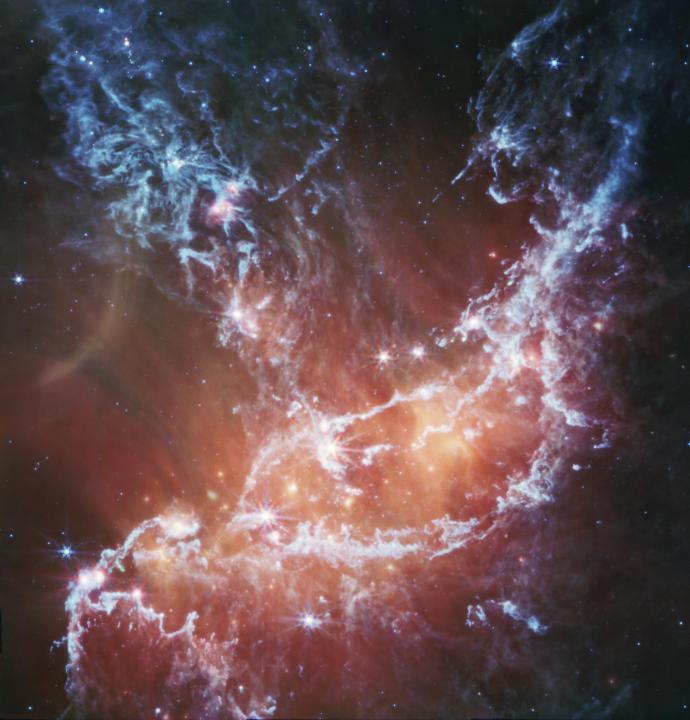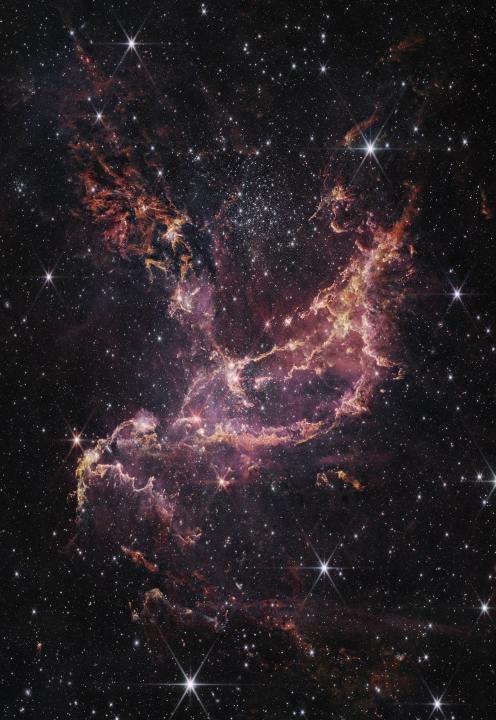A gorgeous new image from the James Webb Space Telescope shows a stunning sight from one of our galactic neighbors. The image shows a region of star formation called NGC 346, where new stars are being born. It’s located in the Small Magellanic Cloud, a dwarf galaxy that is a satellite galaxy to the Milky Way.
The star-forming region of the Small Magellanic Cloud (SMC) was previously imaged by the Hubble Space Telescope in 2005, but this new image gives a different view as it is taken in the infrared wavelength by Webb instead of the optical light wavelength used by Hubble.

This image was taken using the Mid-Infrared Instrument (MIRI), Webb’s instrument that operates in the mid-infrared range. Unlike the other three instruments, which operate in the near-infrared, MIRI is particularly suited to highlighting dust and the intricate structures that it forms. The colors here represent different processes, as red shows the warm dust that is heated by bright nearby stars, while the blue regions represent areas dominated by molecules called polycyclic aromatic hydrocarbons.
You can see the contrast in how objects look at different wavelengths by comparing this image taken with MIRI to a previous James Webb image of the same region taken with its NIRCam instrument.

This image focuses on the near-infrared, which is ideal for highlighting the presence of stars and the arcs of gas in the region, which is primarily hydrogen.
“By combining Webb data in both the near-infrared and mid-infrared, astronomers are able to take a fuller census of the stars and protostars within this dynamic region,” Webb scientists explain. “The results have implications for our understanding of galaxies that existed billions of years ago, during an era in the universe known as ‘cosmic noon,’ when star formation was at its peak and heavy element concentrations were lower, as seen in the SMC.”
Editors' Recommendations
- James Webb telescope peers at the atmosphere of a rocky hell world
- James Webb captures the edge of the beautiful Horsehead Nebula
- James Webb images capture the galactic winds of newborn stars
- The expansion rate of the universe still has scientists baffled
- See what James Webb and Hubble are observing right now with this tool



